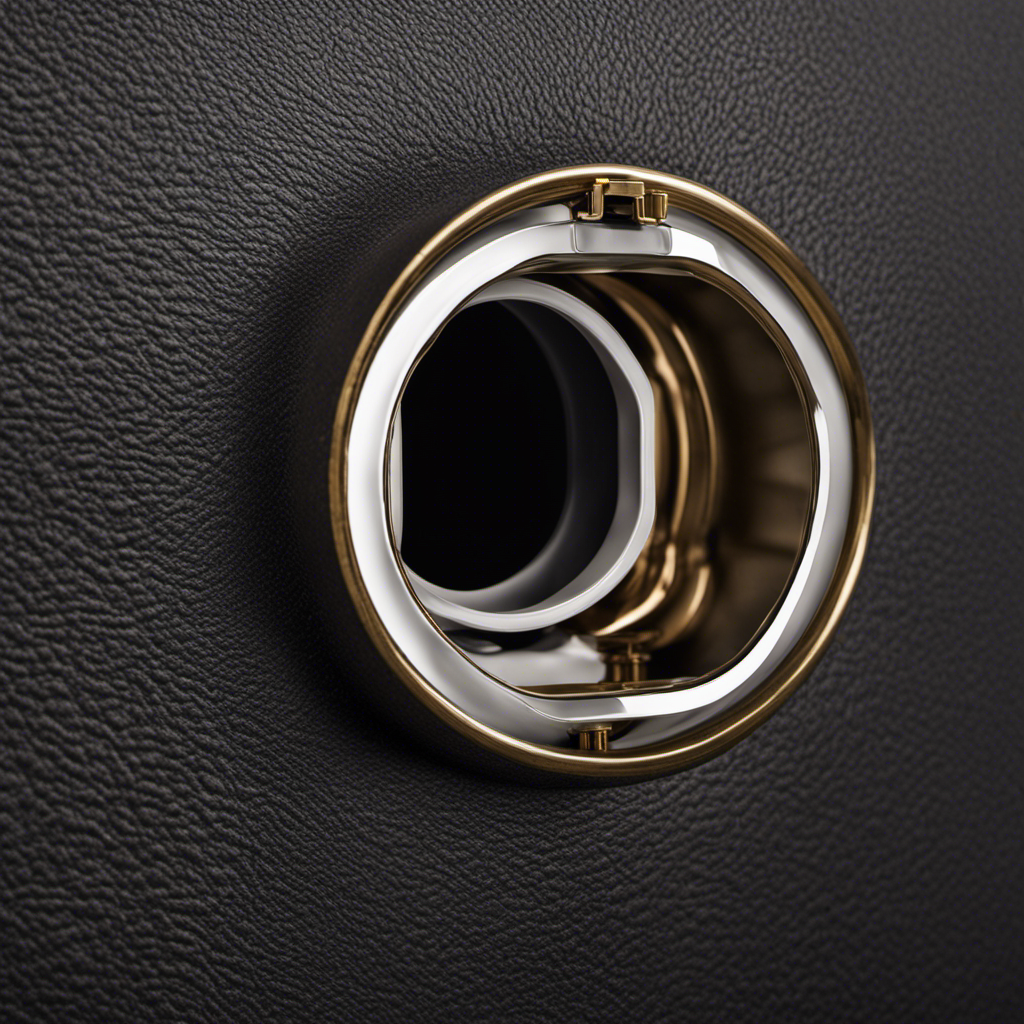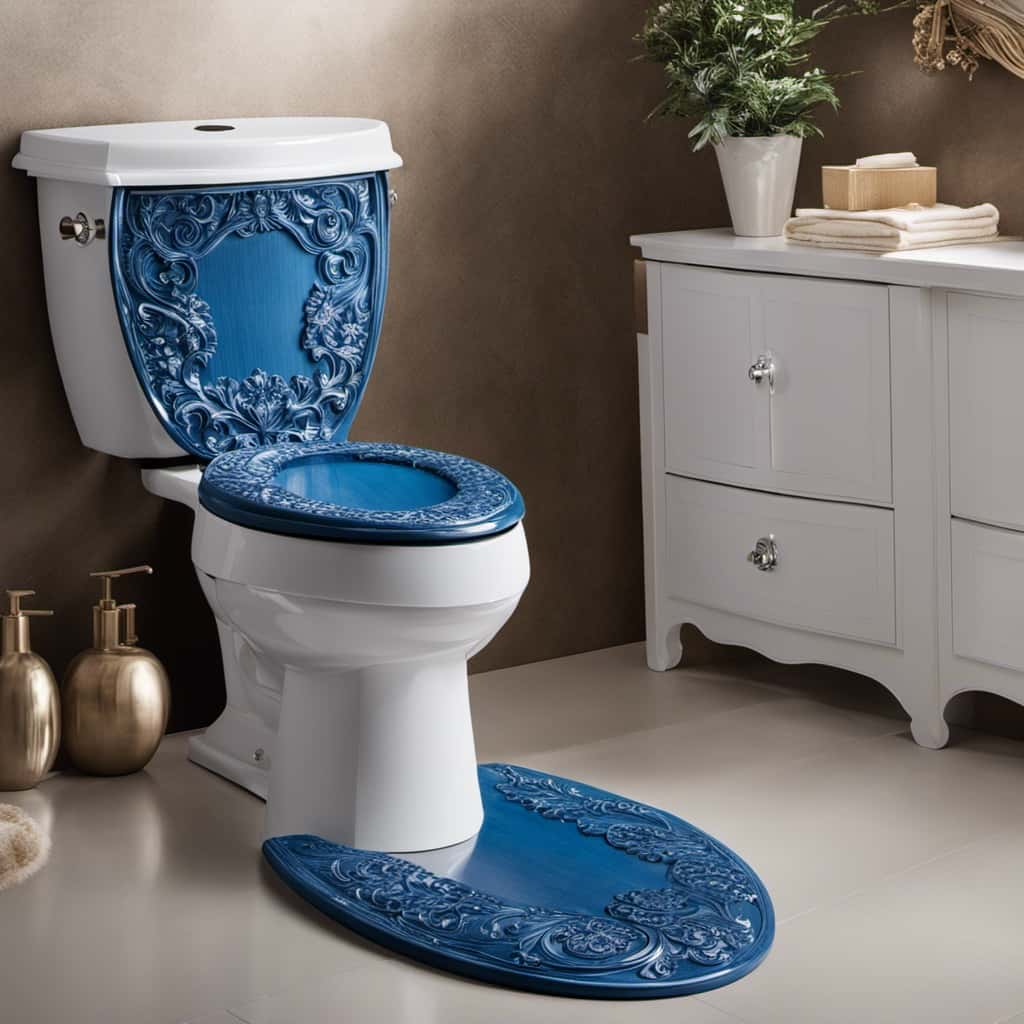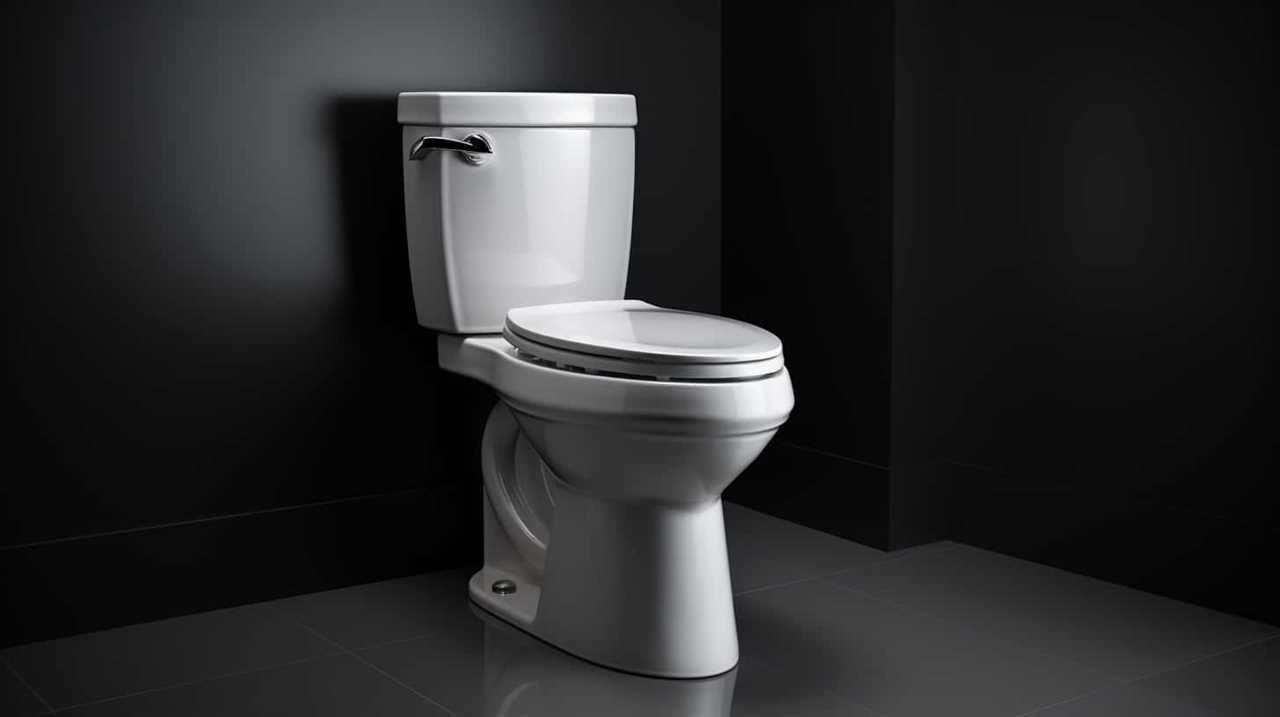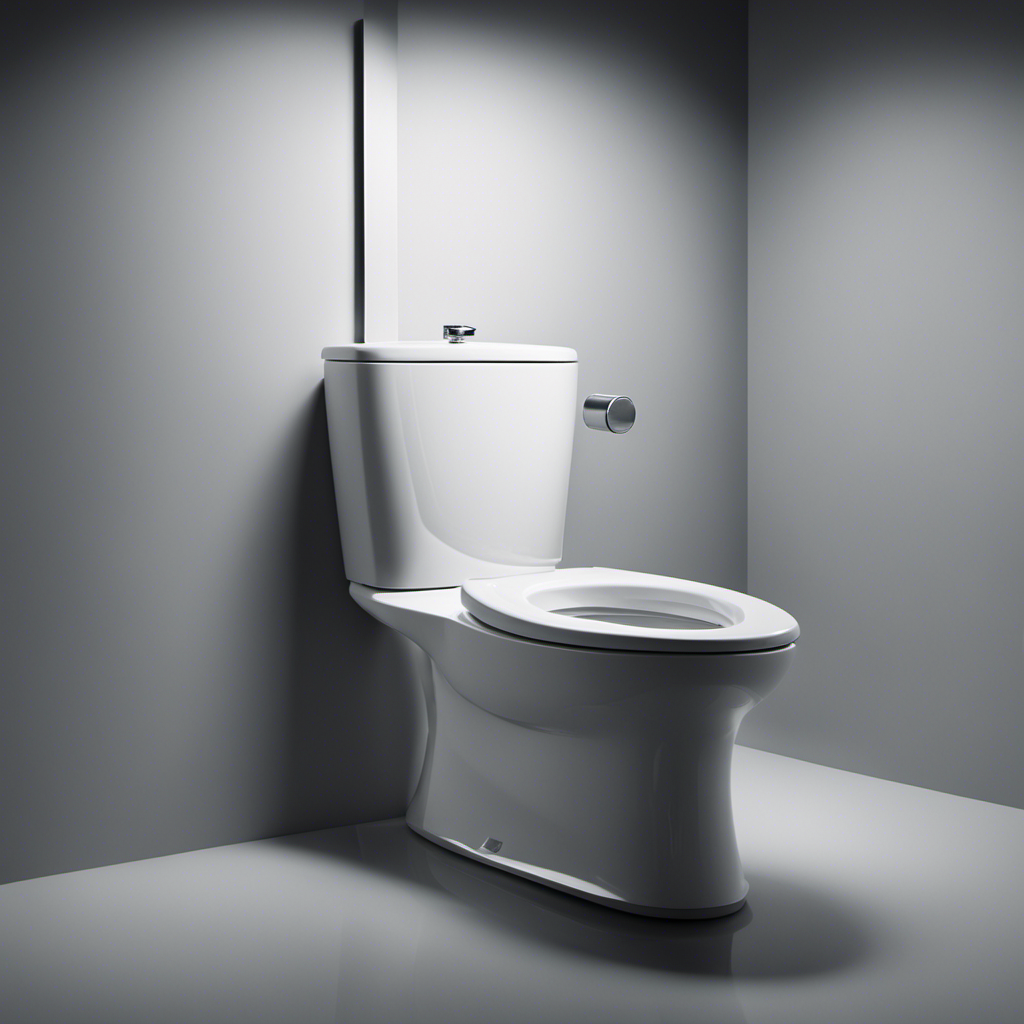Did you know that a faulty flapper on a toilet can waste up to 200 gallons of water per day? That’s a staggering amount, and it’s just one of the many reasons why understanding the flapper is crucial.
In this article, I will explain the function of the flapper, the different types available, and how to identify signs of a faulty one.
Plus, I’ll provide step-by-step instructions on how to replace a flapper and offer maintenance tips to ensure your toilet operates efficiently.
Key Takeaways
- The flapper is a small, circular valve that controls the flow of water in the toilet.
- There are different types of flappers available, including rubber and silicone options.
- Regular inspection and replacement of the flapper is important for optimal performance.
- Proper maintenance and troubleshooting of the flapper can prevent water wastage and damage.
Function of the Flapper
The flapper controls the flow of water in the toilet. It is a small, circular rubber or plastic valve that sits over the flush valve opening at the bottom of the tank.
When the toilet is flushed, the flapper lifts up, allowing water to flow from the tank into the bowl. Once the bowl is filled, the flapper closes, stopping the water flow.
The operation of the flapper is crucial for the proper functioning of the toilet. If the flapper doesn’t lift or seal properly, it can cause water to continuously flow into the bowl, leading to water wastage and increased water bills.
Therefore, regular maintenance of the flapper is important to ensure its proper operation. This includes checking for any signs of damage, such as cracks or wear, and replacing the flapper if necessary.
Types of Flappers
When it comes to flappers, there are several material options available to choose from. These options include rubber, silicone, and foam. Each material has its own benefits and drawbacks, such as durability, flexibility, and resistance to chemicals.
Additionally, the frequency at which flappers need to be replaced can vary depending on factors such as water quality, usage, and maintenance. It is important to consider these factors when selecting a flapper and to regularly inspect and replace it to ensure optimal toilet performance.
Flapper Material Options
You can choose between different materials for the flapper on a toilet, such as rubber or silicone.
When it comes to flapper material durability, both rubber and silicone have their advantages.
Rubber flappers are known for their flexibility and durability. They can withstand constant use and are less likely to crack or break over time.
On the other hand, silicone flappers are known for their excellent sealing properties. They create a tight seal between the tank and the bowl, reducing the risk of leaks. Additionally, silicone is resistant to chemicals and can withstand harsh cleaning agents, making it a great choice for commercial or high-traffic toilets.
Ultimately, the choice between rubber and silicone flappers depends on your specific needs and preferences.
Flapper Replacement Frequency
Rubber flappers typically last longer than silicone ones, but both materials may need to be replaced every few years. The lifespan of a flapper depends on various factors such as water quality, frequency of use, and maintenance practices.
Flappers are essential components of a toilet’s flushing mechanism, as they control the flow of water from the tank to the bowl. Over time, flappers can deteriorate due to constant exposure to water and chemicals, leading to leaks and inefficient flushing.
Regular flapper maintenance is crucial to ensure proper functioning and prevent water wastage. This includes inspecting the flapper for any signs of wear or damage, cleaning it periodically, and replacing it if necessary. Neglecting flapper maintenance can result in higher water bills, toilet malfunctions, and potential water damage.
Therefore, it is important to prioritize regular flapper maintenance to ensure a properly functioning toilet.
Signs of a Faulty Flapper
There’s no denying that a faulty flapper can lead to water leakage in a toilet. As a homeowner, it’s important to be aware of the signs of a faulty flapper to prevent any water wastage and potential damage.
One common problem with flappers is when they become worn or warped over time. This can result in a poor seal, causing water to continuously leak into the toilet bowl.
Another issue is a flapper that doesn’t close properly, leading to constant running water.
Additionally, a flapper that gets stuck in the open position can prevent proper flushing, resulting in incomplete evacuation of waste.
How to Replace a Flapper
Now that we have identified the signs of a faulty flapper, let’s move on to how to replace it. I will guide you through the process of toilet flapper installation, ensuring that you can troubleshoot any toilet flapper problems effectively.
To replace the flapper, follow these steps:
- Turn off the water supply to the toilet by shutting off the valve located behind the toilet.
- Flush the toilet to drain the tank completely.
- Disconnect the chain that connects the flapper to the flush handle.
- Remove the old flapper by detaching it from the overflow pipe.
- Install the new flapper by placing it over the overflow pipe and securing it tightly.
- Reconnect the chain to the flush handle, ensuring proper tension.
- Turn on the water supply and test the flush.
Maintenance Tips for Flappers
To keep your flapper functioning properly, it’s important to regularly clean and inspect the chain for any damage or debris.
Cleaning the flapper is relatively simple. Start by shutting off the water supply to the toilet and flushing to drain the tank. Then, remove the flapper by detaching the chain from the flush lever.
Rinse the flapper thoroughly with water to remove any buildup or sediment. Inspect the flapper for any signs of wear or damage, such as cracks or deterioration. If you notice any issues, it’s best to replace the flapper.
Common flapper problems include leaks, improper sealing, and sticking. By regularly cleaning and inspecting your flapper, you can prevent these issues and ensure your toilet operates efficiently.
Troubleshooting Common Flapper Issues
One way to troubleshoot common flapper issues is by checking the chain for any tangles or snags. If the chain is tangled or snagged, it can prevent the flapper from properly sealing and cause water to continuously leak into the toilet bowl. To fix this problem, simply untangle the chain or remove any snags.
Another common problem with flappers is a worn or deteriorated sealing surface. This can cause the flapper to not seal properly and result in water leakage. To fix this issue, replace the flapper with a new one.
Additionally, flappers can sometimes become misaligned or disconnected from the flush valve. If this happens, reposition the flapper so that it aligns properly with the flush valve and reconnect it securely.
Frequently Asked Questions
How Often Should I Replace the Flapper in My Toilet?
I replace the flapper in my toilet every few years as part of regular toilet flapper maintenance. Signs of a worn out flapper include water leaks and a toilet that constantly runs.
Can I Clean the Flapper Instead of Replacing It?
Cleaning the flapper instead of replacing it can be a cost-effective solution. However, it may not always be effective in resolving issues. It’s important to consider the cleaning methods and weigh the pros and cons before deciding.
What Are Some Alternative Solutions to a Faulty Flapper?
When troubleshooting flapper issues, there are alternative solutions to consider. Instead of immediately replacing the toilet flapper, you can try cleaning it or adjusting the chain length. These steps can help resolve common flapper problems.
Are Flappers Universal, or Do I Need to Buy a Specific One for My Toilet Model?
Flappers are not universal, so it’s important to buy the right one for your toilet model. Adjustable flappers offer durability and the benefit of easily adjusting the water flow for optimal flushing performance.
How Can I Prevent Flapper Issues From Occurring in the First Place?
To prevent flapper issues, I recommend regular preventive maintenance. Inspect the flapper for wear and tear, clean it regularly, and ensure it is properly aligned. These steps can help avoid common flapper problems.
Conclusion
In conclusion, the flapper on a toilet is a small but crucial component that helps regulate the flow of water from the tank into the bowl. It plays a vital role in ensuring proper flushing and water conservation.
It is interesting to note that a faulty flapper can waste up to 200 gallons of water per day, contributing to water scarcity and increased water bills. Therefore, it is important to regularly inspect and maintain the flapper to avoid such wastage and ensure the efficient functioning of your toilet.










